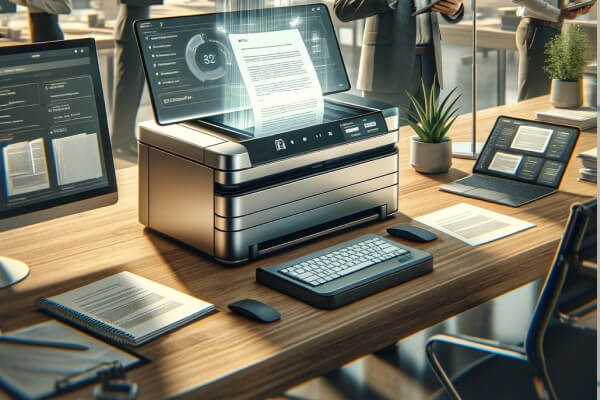As the digital world evolves and cutting-edge technology becomes more accessible to businesses of all sizes, it’s becoming easier to run a paperless business.
With the advent of mobile applications, ubiquitous computing and electronic statements, going paperless is simply inevitable. Nonetheless, old habits die hard, and a lot of people are reluctant to change.
There are plenty of great reasons for going paperless, and there’s no doubt that the following motivations will see the paperless business become mainstream over the next year.
1. Easy access to information
Getting hold of information used to take a matter of days. Now, it takes just seconds to receive an email or access electronic documents online. Better yet, collaboration tools have made it possible for people to work on the same documents at the same time, no matter where they’re physically located.
Offering far quicker and easier access to information, digital technology also helps to automate workflows and greatly reduce reliance on manual intervention. With the workforce becoming increasingly mobile, the days of being stuck in an office waiting for a postal delivery are behind us.
2. Improved security
Contrary to popular belief, going paperless also offers much better security over your business data, although this does depend a lot on the systems you use for storing confidential information. However, with the right security protocols, you no longer need to depend solely on physical security and its inherent limitations.
The paperless approach is also better for disaster recovery, since it allows you to easily store multiple digital copies of your data in different physical locations. In other words, if disaster strikes your workplace, your business applications and data will be unaffected, provided they’re hosted in the cloud.
3. Automatic data capture
With digital workflows comes automation. And with machine learning developing at an extremely fast rate, repetitive manual processes are becoming a thing of the past. Going paperless makes it easier to capture data automatically. For example, you can use web-based forms to collect and share information while improving data quality.
Digitally captured data is inherently more reliable and accurate than that which is entered using manual processes alone. Additionally, inbound data can be integrated with your core business processes, such as customer relationship management and enterprise resource planning software.
4. Document consolidation
Consider how time-consuming it was to track down information before computers redefined the modern business. For example, to resolve a customer support request, an employee would have to manually search through folders of printed documents in a filing cabinet, thus greatly increasing support resolution times.
Going paperless is all about bringing your data together in a centralized database, thus improving productivity and performance. With everything digitized, you can also search for specific documents and data in seconds and even have your software automatically assemble documents from different sources.
5. Reduced overheads
Businesses are spending less every year on printed documents, which shouldn’t come as a surprise considering that printer ink, for example, is one of the most expensive liquids known to mankind. Postal services aren’t cheap either, especially when you factor in the extra time involved in sending and receiving mail.
It’s often said that what’s better for the environment is also better for your wallet, and in no case could this statement be truer than it is with the paperless office.
According to InformIT, paper alone costs an average of $80 per year per employee, and that doesn’t even include the cost of printers, ink and maintenance.
PairSoft is a document management system that helps businesses automate their electronic workflows and enhance productivity. If you’re looking to run a cheaper and more efficient way to run your office in 2018, give us a call today.






